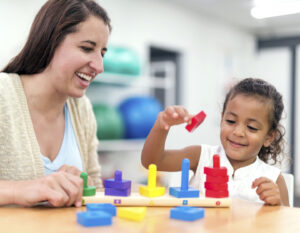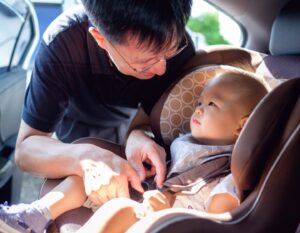

Scoliosis is a spinal condition that I get a lot of questions from parents about. Whenever I give lectures at schools or conduct spinal screenings in the community, the main concern from parents is always scoliosis. Hopefully this article can shed a little light on the topic and answer any concerns you may have.
What is Scoliosis?
A normal spine when viewed from behind or in front should be straight. When there is a curve in the spine from these viewpoints you have a scoliosis. Often the curve takes the shape of an “S” or “C”, with the vertebrae rotated or twisted and pulling the ribs higher on one side of the spine. The Scoliosis Research Society defines a scoliosis as a curvature of the spine 10 degrees or greater when measured on X-ray imaging. Scoliotic curves most often appear in the upper and middle back region (thoracic spine). They can also less commonly occur in the lower back (lumbar spine).
According to the National Institute of Arthritis and Musculoskeletal and Skin Diseases, 3-5 out of every 100 children develop curves severe enough to require treatment. In most cases, scoliosis develops slowly and isn’t diagnosed until ages 10-14. It is also more common in females vs males.
Types of Scoliosis in Children:
The American Academy of Orthopaedic Surgeons describes 3 different types of scoliosis that can affect children: Congenital, Neuromuscular and Idiopathic.
Congenital Scoliosis
This type of scoliosis is present even before the child is born. It is quite rare and caused by a failure of the vertebrae to form normally. The vertebrae may be partially formed, missing altogether or fused together during development.
Neuromuscular Scoliosis
Many neurological conditions or diseases can result in scoliosis. Examples include: cerebral palsy, muscular dystrophy, spina bifida and spinal cord tumours. These conditions cause imbalances and weakness in the muscles attached to the spine, resulting in stronger muscles winning the tug of war against weaker muscles and pulling the spine out of alignment.
Idiopathic Scoliosis
This is by far the most common type of scoliosis among children, accounting for over 80% of cases. Idiopathic is a fancy way of saying the cause is “unknown”. It is broken down further into 3 categories based on age: infantile (from birth to 3 years old), juvenile (from ages 3-10) and adolescent (from ages 10-18, most common). Idiopathic scoliosis most often starts during puberty and affects girls more than boys. Although the cause is unknown there is some research that suggests a genetic link. Studies indicate that in 30% of idiopathic scoliosis cases, there is a family history for the condition.
Symptoms of Scoliosis:
Common visual indications of possible scoliosis include:
- Tilted, uneven shoulder heights
- Uneven or protruding shoulder blades
- Tilted hip and pelvis
- Leg length inequalities
- Uneven rib cage heights when bending forward
- Differences in the levels of the hands when standing upright with arms to the side
- Visual differences in back muscle tone with shirt off
- Position of the head is not centered over the body
It is not uncommon for scoliotic patients to experience spinal pain due to muscle imbalances. Muscles on the convex side of the spine undergo stretching while those on the concave side experience compression. Likewise, the spinal facet joints on the concave side are tractioned while those on the convex side are jammed together. In more severe cases of scoliosis, lung and heart function may be affected.
How is Scoliosis Diagnosed?
The medical practitioner will conduct a detailed medical history and physical examination. During the examination they will be looking for things such as uneven shoulder and hip levels, leg length inequalities and differences in rib cage heights when bending forward (Adam’s Test). Neurological testing will be conducted to rule out neuromuscular causes for the scoliosis. Further imaging including X-rays, Magnetic Resonance Imaging (MRI) or Computerized Tomography scan (CT scan) may be taken to provide definitive proof of the scoliosis. The imaging will be able to show the shape, location and severity of the scoliosis. To calculate the curvature of the scoliosis in degrees, a measurement called the Cobb Angle is calculated.
Treatment for Scoliosis:
The main goal of treatment is to halt the progression of the curve and prevent deformity. The medical practitioner must take into consideration several factors before deciding on an appropriate course of care including: the severity and location of the curve, the age of the child, the number of growing years remaining (once adulthood is reached, curve progression is unlikely) and the child’s ability to tolerate certain therapies or procedures.
There are several treatment options available including:
Observation and Monitoring
Curves with a Cobb angle measuring less than 25 degrees are usually monitored to make sure they don’t get worse. The practitioner will schedule appointments every few months and conduct follow up x-rays to note any curve progression. This must be done until the child has reached skeletal maturity. Growth spurts are times when the curve can develop rapidly, so it is important to pay extra attention during those periods.
Bracing
If the child is between 25-40 degrees and still not skeletally mature, then bracing may be recommended. There are studies that show that bracing is effective in preventing further curvature increases if worn correctly. Most braces require customisation to fit each individual.
Surgery
A curve of 40-50 degrees or more may start to affect organ function including the lungs and heart. Unfortunately this may require surgical correction.
Other forms of therapy
Chiropractic and Physiotherapy have been shown to be effective in reducing many of the symptoms that may occur with scoliosis including: spinal pain, muscle tightness and laxity, joint fixations/restrictions, trigger point pain and range of motion limitations.
As with most health conditions, early detection is important with scoliosis. The faster one can identify a scoliosis, the better the chances that curve progression can be stopped.
 View All
View All











 View All
View All





 View All
View All


 View All
View All













